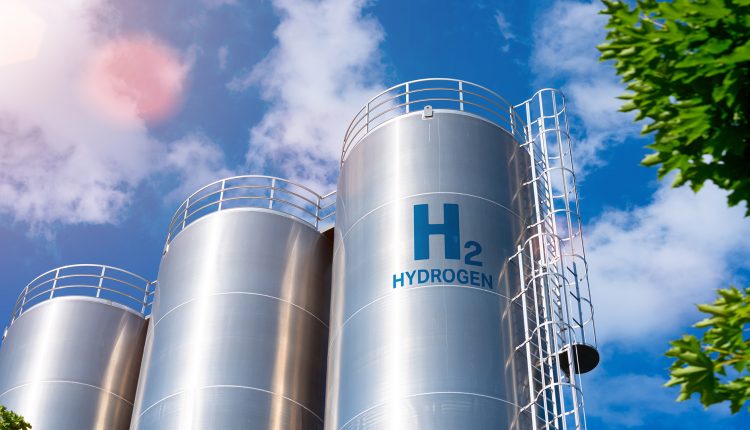Green hydrogen policy inevitable for shipping, aviation to reach zero emissions – report
A lack of policy supporting the production of green hydrogen will not help aviation and shipping have access to fuels that will truly lead to sustainable decarbonisation.
All pathways to truly sustainable fuels for the shipping and aviation sectors require green hydrogen – produced from renewables – with some of them requiring carbon dioxide from sustainable sources like direct air capture (DAC), a report released by the SASHA Coalition, facilitated by Opportunity Green said on Monday.
The report reveals that there is a lack of policy supporting the production of green hydrogen, which is slowing down demand and discouraging investment, creating a “Green Hydrogen Gap.”
The Skies and Seas Hydrogen-fuels Accelerator Coalition – or SASHA released The Green Hydrogen Gap Report facilitated by Opportunity Green to coincide with International Shipping Week, where future fuel mix is a hot topic of debate under this year’s theme of decarbonisation. The report outlines how governments should prioritise the use of hydrogen and DAC in the aviation and shipping sectors because they lack decent alternatives, and also highlights the need for policy to ensure that these solutions can be rolled out at scale.
While first-mover ambitious companies can step forward voluntarily to send clear, unambiguous and urgent demand signals to green hydrogen producers, their actions will always be in isolation without the backing of policymakers, the report added.
The report draws on exclusive research by Arup and looks at the policy landscape of green hydrogen and DAC in the UK and the EU. It suggested that hydrogen production is behind on projections of where it needs to be to meet the temperature goals of the Paris Agreement and that this is due to a lack of guaranteed demand across the board. Both EU and the UK’s latest environmental policies focus more on supporting biofuels and/or the use of gas (liquefied natural gas) in aviation and shipping respectively, rather than ensuring that green hydrogen – required for full decarbonisation – is prioritised for aviation and shipping.
“There is a worrying delay in green hydrogen production, which means that if aviation and shipping don’t make their case clearly and loudly now, they won’t have access to fuels that will truly lead to sustainable decarbonisation.” Aoife O’Leary, CEO of Opportunity Green and director of the SASHA Coalition, said.
“Governments are already prioritising other industries for hydrogen, so without stronger policy, aviation and shipping will be overlooked.” O’Leary added.
Kerosene and heavy fuel oil currently meet the bulk of fuel demand for the marine and aviation sectors. It is estimated that the total consumption of marine fuels accounts for around 5 percent of global oil demand.
“Clearly, shipping and aviation will be unable to decarbonise at the scale and pace required without alternative fuels.” Sally Prickett, director of Hydrogen, CCUS and New Fuels in Arup’s Advisory team, said.
“It’s unlikely that there will be a ‘one solution fits all’ fuel for these sectors, but one thing this research tells us is that green hydrogen will play a critical role in their decarbonisation as a feedstock for the majority of sustainable fuel pathways.” Prickett added. “Without green hydrogen, these sectors will struggle to find satisfactory zero emissions solutions.”
Policy signals are supporting the uptake of hydrogen-derived fuels at both UK and EU levels. However, these are not on the scale that is needed to meet Paris targets and are just one component that will drive the adoption of hydrogen-derived fuels.
“Policymakers must recognise that green hydrogen will continue to be in limited supply in the coming decades and should therefore be targeted towards sectors – such as shipping and aviation – that have no more efficient routes to decarbonisation.” the report added.
Scott Pendry, director of External Relations at zero emission aircraft developer Cranfield Aerospace Solutions, said the report demonstrates that there is “no path to a climate neutral aviation system that does not involve hydrogen on a large scale: whether that be as an energy source itself, or as a feedstock for the sustainable aviation fuels of the future.”
“Both government and industry must now start addressing the question of how to scale the production, storage, and use of green hydrogen for both SAF and hydrogen aircraft propulsion, Pendry noted.
“Both shipping and aviation have come under increasing scrutiny for their climate impact, resulting in additional regulation at international, regional and national levels. And regulation will only get stricter over time as the climate crisis worsens.” Nuala Doyle, policy officer at the SASHA Coalition, said.
“We know that the fuels that will fully decarbonise both sectors require green hydrogen and direct air capture. However, current regulations do little to incentivise these – instead the regulations encourage fuels that either are not scalable or are still fossil fuels.
“Without regulation that aligns with, and incentivises, the goal of zero emissions, companies may find they end up with stranded assets from investment in a fuel that is no longer acceptable to use.” Doyle concluded.



